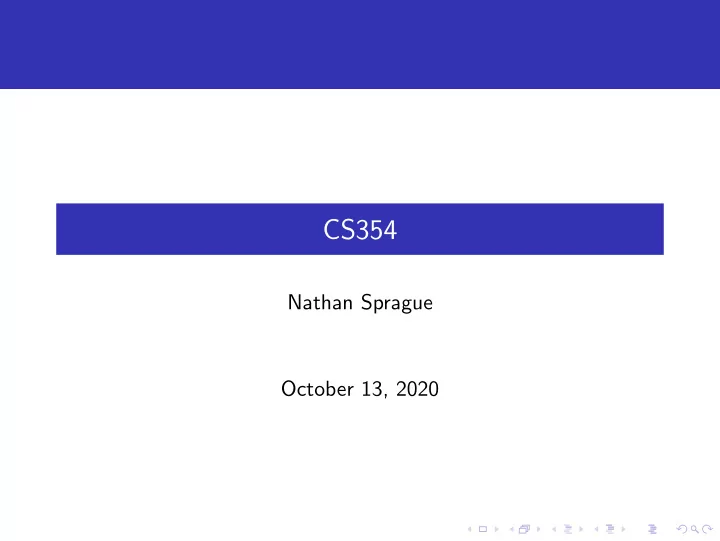

CS354 Nathan Sprague October 13, 2020
State Estimation The goal is to estimate the state of the robot from a history of observations: Bel ( X t ) = P ( X k | Z 1 , Z 2 , ..., Z k ) We make some (true-ish) simplifying assumptions: Markov Assumption: P ( X k | X 1 , X 2 , ..., X k − 1 ) = P ( X k | X k − 1 ) Assumption that the current observation only depends on the current state: P ( Z t | X 1 , Z 1 , X 2 , ..., Z t − 1 , X t ) = P ( Z t | X t )
Probabilistic State Representations: Grid-Based Probabilistic Robotics. Thrun, Burgard, Fox, 2005
The Answer! Recursive State Estimation Two Steps: Prediction based on system dynamics: � Bel − ( X t ) = P ( X t | x t − 1 ) Bel ( x t − 1 ) x t − 1 ∈ X Correction based on sensor reading: Bel ( X t ) = η P ( Z t | X t ) Bel − ( X t ) Repeat forever. Again η is a normalizing constant chosen to make the distribution sum to 1.
Prediction Example The robot is now moving Right! (or trying to) Motion model: Robot is 80% likely to move the direction he intends to move. 20% likely to fail and not move. Assume we know that the robot starts in position a, Bel ( X 0 ) = a b c d 1 0 0 0 Or: Bel ( X 0 = a ) = 1 Bel ( X 0 = b ) = 0 ...
Prediction Example Run one step of prediction: � Bel − ( X 1 = a ) = P ( x 1 = a | x 0 ) Bel ( x 0 ) x 0 ∈ X = P ( X 1 = a | X 0 = a ) Bel ( X 0 = a )+ P ( X 1 = a | X 0 = b ) Bel ( X 0 = b )+ P ( X 1 = a | X 0 = c ) Bel ( X 0 = c )+ P ( X 1 = a | X 0 = d ) Bel ( X 0 = d ) = . 2 × 1 + 0 × 0 + 0 × 0 + . 8 × 0 = . 2
Prediction Example Similarly Bel − ( X 1 = b ) = . 8 × 1 + . 2 × 0 + 0 × 0 + 0 × 0 = . 8 Bel − ( X 1 = c ) = 0 Bel − ( X 1 = d ) = 0 Unsurprisingly, Bel − ( X 1 ) = a b c d .2 .8 0 0
Estimation Now that we have a prediction, we can update it based on the latest sensor reading: Bel ( X t ) = η P ( Z t | X t ) Bel − ( X t ) This is exactly what we did when we talked about using Bayes rule to update a prior state estimate based on a sensor reading. The process is then repeated indefinitely.
Recommend
More recommend